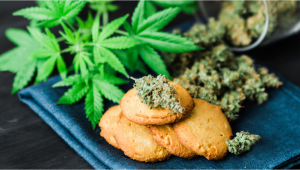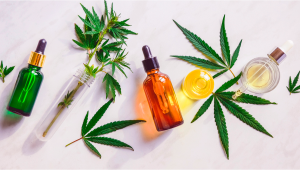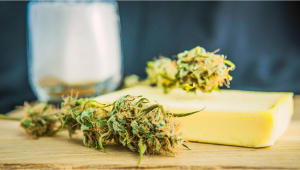
If you are a medicinal user or just want to try different ways to consume cannabis, edibles are the way to go!
Contents:
Making cannabis edibles is one of the most effective ways to get medicated and they can be easily made at home with alcohol, butter or oil, an oven, and of course, cannabis.
Edibles are the most effective way to get high, after they’re ready you won’t need papers, a lighter, or anything else and the effect can be quite strong even for avid consumers. However, making them can be tricky if you don’t know how to make them properly so if you want to know how to make weed edibles, read along.
1. Why Make Edibles?
Edibles are usually consumed by medicinal patients who need a strong effect to alleviate chronic pain or other disorders, by consuming cannabis in food, you leave out the smoke and other bad sides of consuming cannabis which aren’t a big problem for most consumers but are a huge con for some.
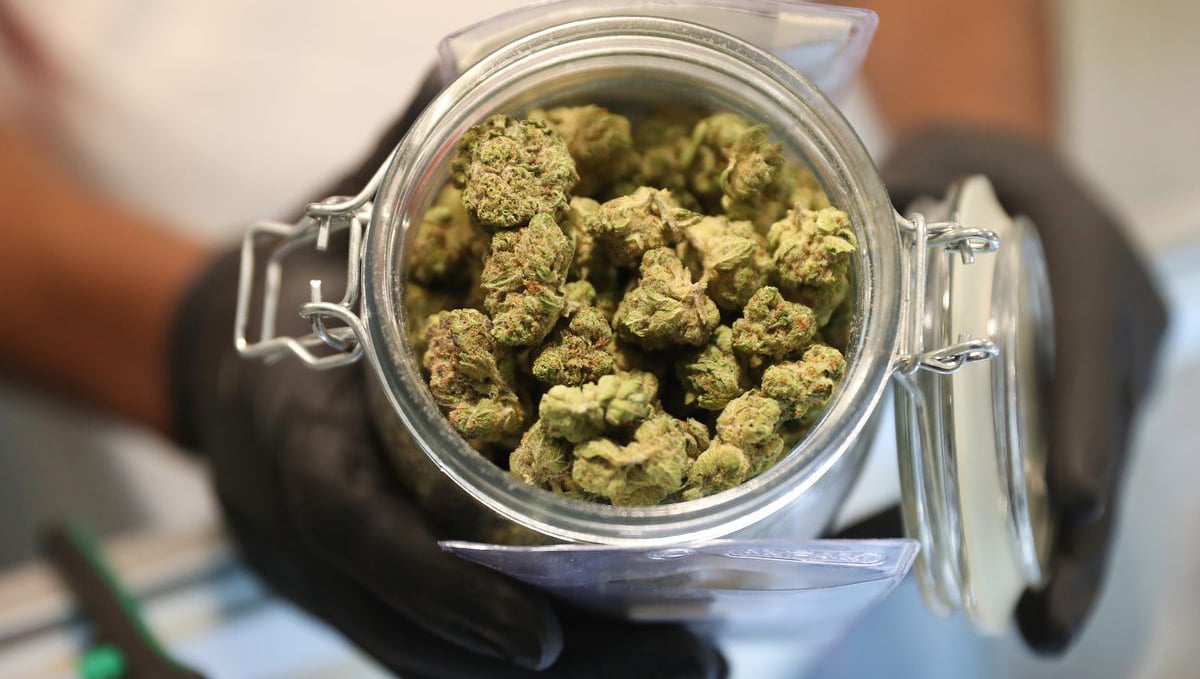
Edibles is a simple and effective way to consume cannabis without smoking or vaporizing.
Making edibles the correct way allows you to consume the correct dosage you need and at any time you want, so to help you make your own medicine at home we’ve come up with this article.
2. Calculating Dosage
Before making your edibles it’s essential you know exactly how much THC you want to consume with each portion and how much THC is in the flowers, hash, or whatever you’re using.
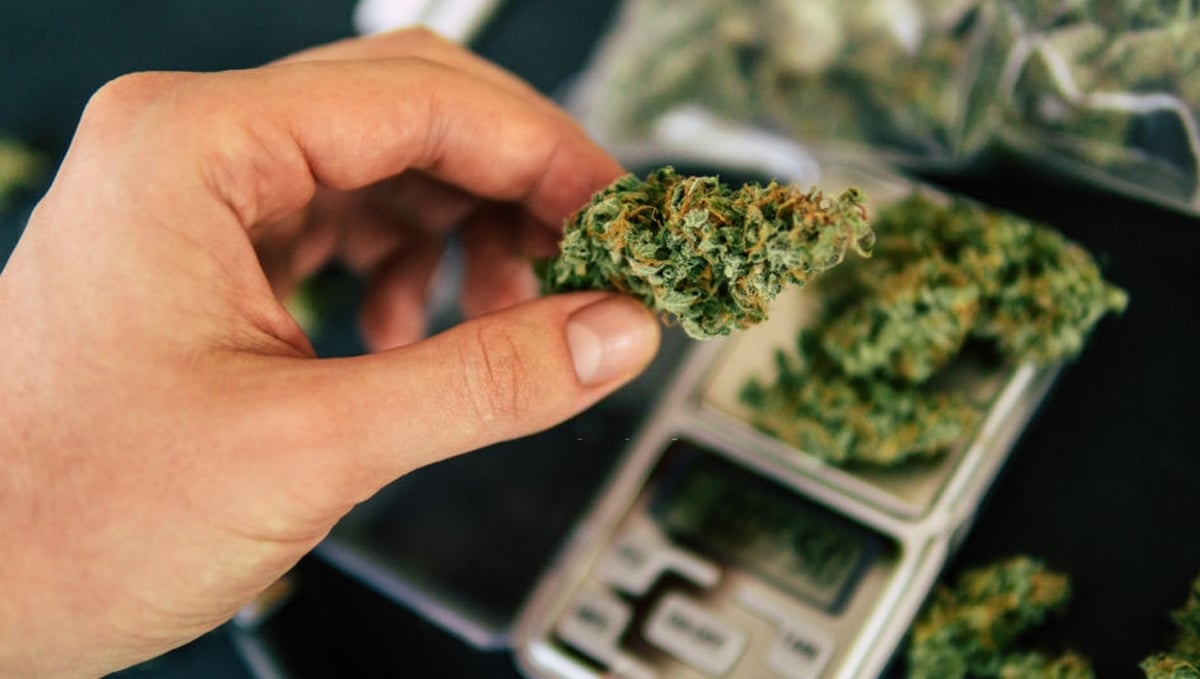
It's essential you know exactly how much THC goes into your edibles to prevent getting too high.
Now, this can be easy if you live in California because every product that you buy at a dispensary comes with a lab test that provides exactly what it contains but if you’re growing your own cannabis or making your own extractions, it can be quite hard so this table will help you figure it out.
THC Content per gram
| Cannabis product | THC percentage | THC content |
| Brick weed | 3-6% | 30-60mg |
| Regular home-grown flowers | 15-20% | 150-200mg |
| Top-shelf cannabis | 20-30% | 200-300mg |
| Extracts | 60-90% | 600-900mg |
Remember that once you’ve consumed your cannabis there’s no effective way to stop the effect so we recommend going slowly and experimenting with different amounts to know what you’re comfortable with and what works for you.
Recommended THC mg per serving
| Consumer tolerance | Weak | Recommended | Strong |
| Very low tolerance | 0.3mg | 3mg | 10mg |
| Low tolerance | 0.5mg | 10mg | 20mg |
| Medium tolerance | 10mg | 10-25mg | +25mg |
| High tolerance | 25mg | 25-60mg | +60mg |
Have in mind that this table is just an approximation to help you better dose your cannabis edibles, if you already know the THC percentage you can search online for a dosage calculator to measure it exactly.
If you consume cannabis solely for the therapeutic effects and don’t like the strong psychoactive effect that THC provides, you can follow the same process with CBD-rich strains such as our CBD Auto 20:1 which contains 20% CBD and as low as 0.3% THC and it’s better suited for medicinal patients or those just looking for a way to alleviate pain and other disorders.
3. How To Make Weed Edibles
Making edibles is relatively simple but there are several methods which will work better depending on how you want to consume your edibles, you can make cannabis-infused alcohol, baked goods, salads, gummies, ice-cream, lollipops, and several other things but all of them start with three basic products: cannabis tinctures, cannabutter or cannabis oil.

Making cannabis-infused edibles is super simple!
In this article, we’ll teach you how to make these three cannabis derivatives step-by-step and we’ll include a good recipe for you to enjoy them, just remember that you can do any type of edible you want so get creative and experiment at home.
Decarboxylation
Decarboxylation is the process of converting THCA to THC, this process occurs when you’re smoking or vaping cannabis. But when cooking, first you will need to activate the THC for you to get the desired effects.
Step 1
Preheat your oven to around 100 °C, the temperature cannot go over 105°C because it will evaporate the cannabinoids, if you are worried about the temperatures going up you can do this process at 90°C to be safe but it will take a bit longer.
Grind your flower into a fine consistency, if you’re using kief, trims, or extraction there’s no need to process it.

It's essential you decarboxylate your cannabis before making edibles.
Step 2
Place a sheet of parchment paper or tin foil on a baking sheet and spread it all over it. You want to have one thin layer of flower (extract, kief, or whatever) so if you have too much, just divide it in half. If the layer isn’t thin, your cannabis won’t decarboxylate properly and you will waste precious cannabinoids.
Step 3
Place the baking sheet in the oven, 20 min should be enough for around 5g but it may take longer (or less) depending on the amount you are decarboxylating at a time, if you’re using more than 5g you should check your cannabis every 20min.
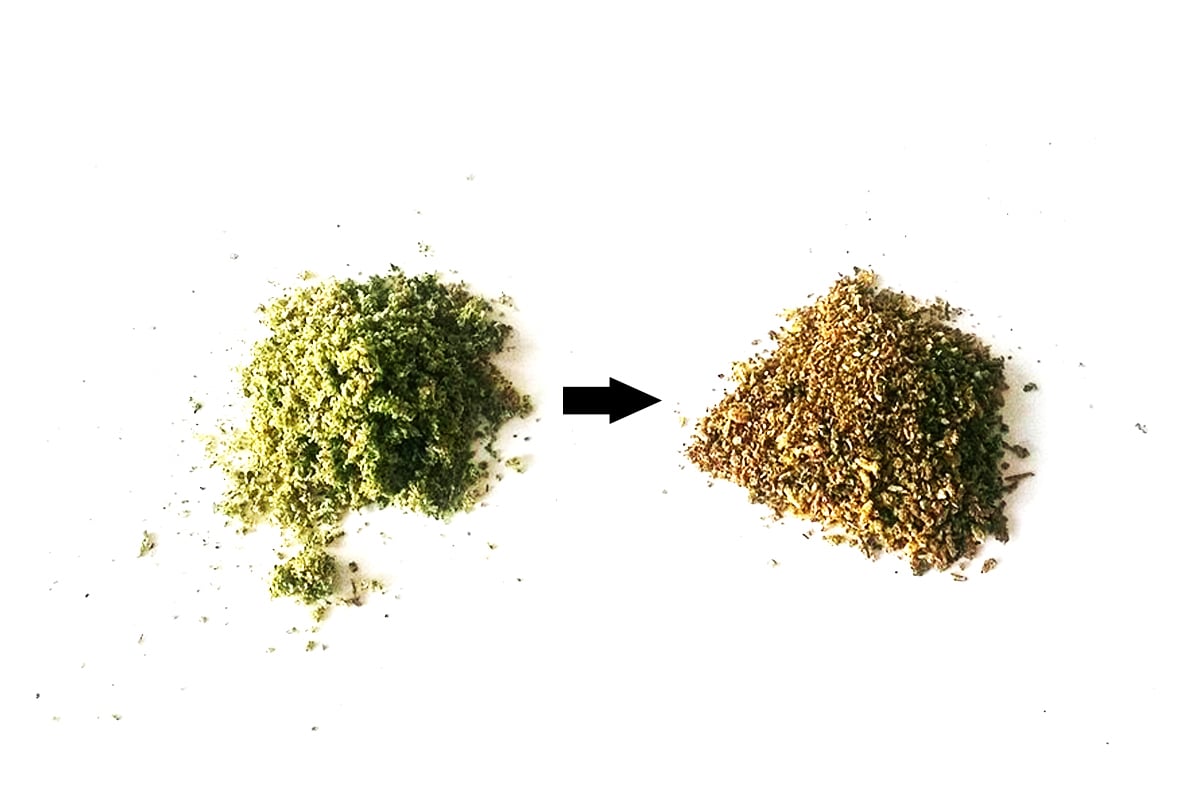
When your cannabis is roasted it means you have decarboxylated your flower properly.
When your cannabis has turned into a light brown color it means it has been properly decarboxylated, even though it might seem hard, you will be able to tell the difference in the color and smell, you just have to pay close attention.
After your cannabis has been decarboxylated just let it cool down and it’s ready to be used any way you want, if you don’t know how to use it, we recommend following any of the recipes below.
4. Cannabis Tinctures Recipes
Cannabis tinctures are basically cannabis extracts made with alcohol and are a great way for mainly medicinal but also recreational consumers to get the desired effects without actually smoking cannabis.
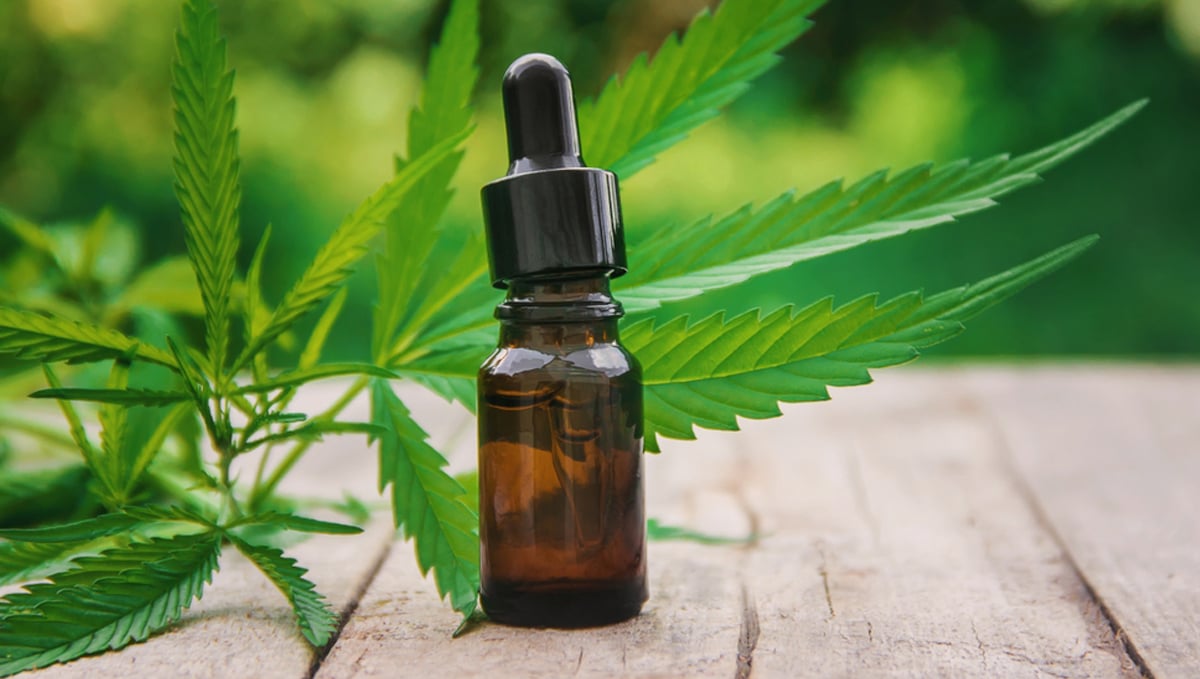
Tinctures are the most versatile cannabis-infused product.
This type of extraction is super versatile and can be used on a salad, cookies, gummies, or taken straight, as long as you don’t heat it’ll work for sure, because of its versatility it ends up being one of the best ways to consume cannabis for medicinal patients.
How To Make Cannabis Tinctures
One of the benefits of cannabis tinctures is its versatility, tinctures can be mixed in whatever you like and even taken straight. It's a great option for new cannabis users who are only looking for medicinal extracts or a smoke-free way of consuming cannabis.
So what will we need in order to make cannabis tinctures at home:
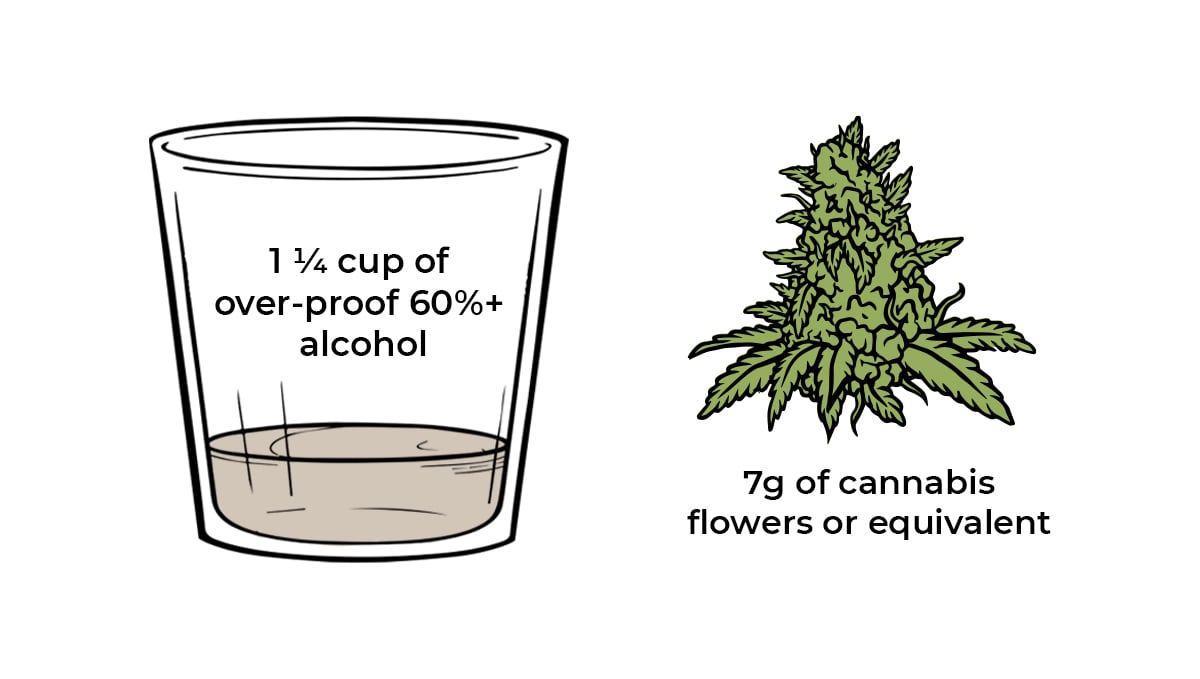
Cannabis tincture basic ingredients.
Ingredients
- 1 ¼ cup of over-proof 60%+ alcohol (vodka, rum, or anything with more than 60% alcohol);
- 7g of cannabis flowers or equivalent (approximately 1400mg of THC).
Step 1
Decarboxylate your cannabis as explained above.
Step 2
Place the decarbed cannabis in a heat-proof glass container (like a mason jar or something similar) and pour the alcohol in (you can use vodka or rum but remember that the better the quality of the alcohol, the better the product you’ll end up with).
Step 3
Boil water in a small cooking pot, place the glass container with cannabis in it in the middle and make sure the water level reaches about half of it.
Step 4
Use a thermometer to ensure the temperature is around 75-80°C and let the alcohol evaporate, this process should take around 20min, as the alcohol evaporates some plant material might stay on the sides of the glass container so scrape it down so it’s always in contact with the alcohol.
Step 5
Use a tea strainer to strain the remaining liquid, you can use cheesecloth but it usually absorbs a lot of your tincture so a tea strainer works best.
Step 6
Repeat the process, use the same cannabis, and add more alcohol to ensure you’re extracting everything you can.
Step 7
After evaporating all of the alcohol, your tincture is now ready to be consumed. You can straight drink it but we recommend making gummies which is a really effective and delicious way to medicate yourself.
How To Make Cannabis Gummies
If you're a fan of cannabis edibles surely you've heard of weed gummies. Cannabis gummies is a great choice because they allow you to microdose all day long and due to their size, you can fit a lot of gummies in a small container.
If you're still wondering how hard can it be to make them yourself, here's a recipe to follow.
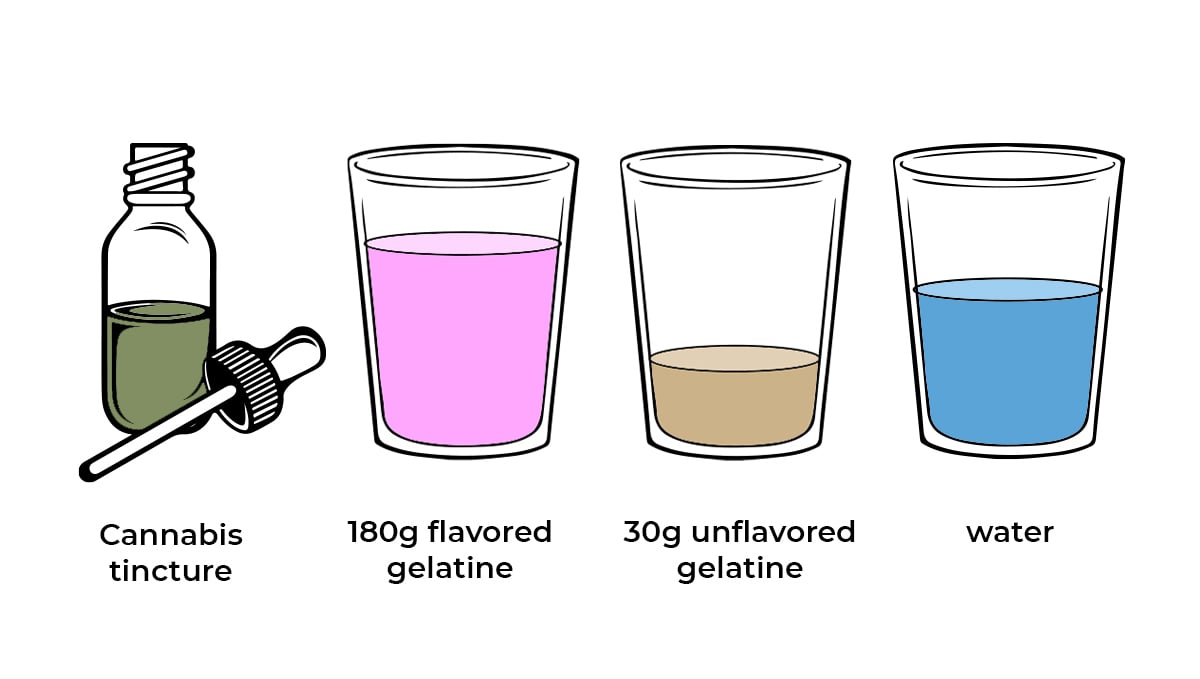
Ingredients used in making infused gummies
Ingredients
- Cannabis tincture;
- 180g flavored gelatine;
- 30g unflavored gelatine;
- Water.
Making these gummies is extremely simple, you just have to make all the Jell-O like you usually would then combine it and leave it to cool down.
After it has been cooling down for about 20min you can go ahead and mix the tincture in, spray the molds with cooking spray so the gelatine comes scout easily, and take it to the fridge.
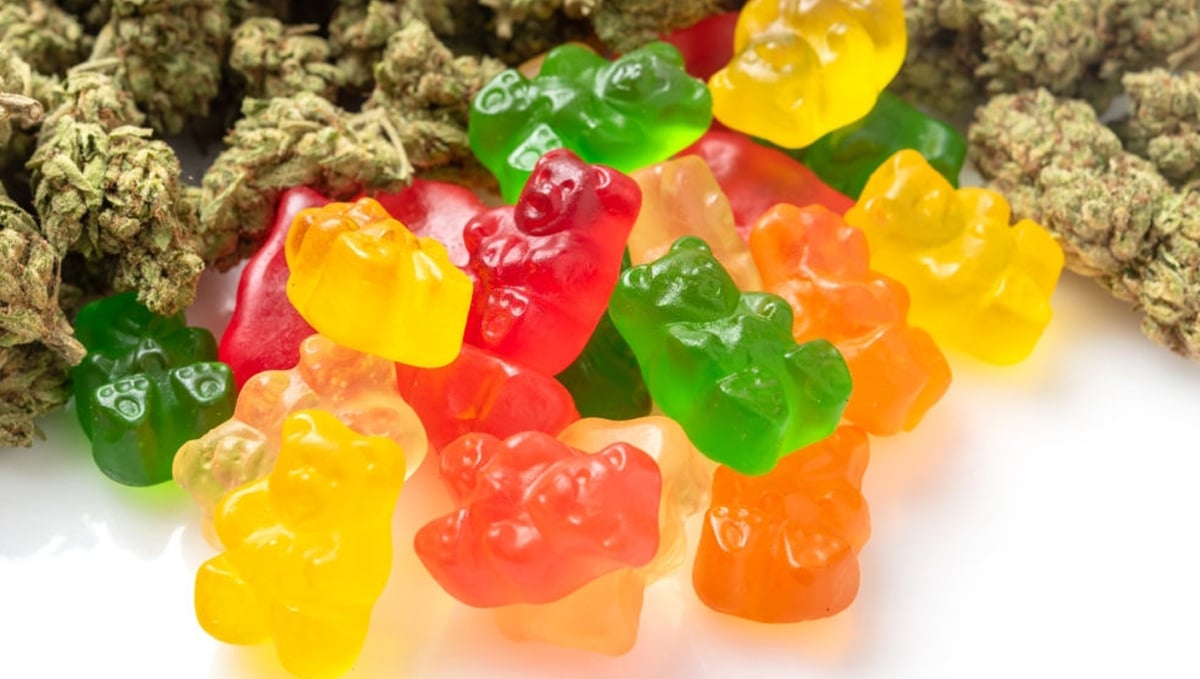
When the Jell-o is firm they are ready to be consumed. Remember to store them in the fridge or freeze them if you’re planning to store them for more than a couple of weeks, you can also store them in an airtight container but only for 2-3 days.
Tip: If you have a high tolerance you can also mix a bit of the tincture with sugar to dip the gummies in and make them super strong!
6. Cannabutter Recipes
The main difference between tinctures and cannabutter or oil is the uses you can give it. Cannabutter cannot be used in recipes that don’t require butter (obviously) like gummies or ice cream, so you're limited to baked goods but it will work like a charm if you use it for your weed cookies recipe.
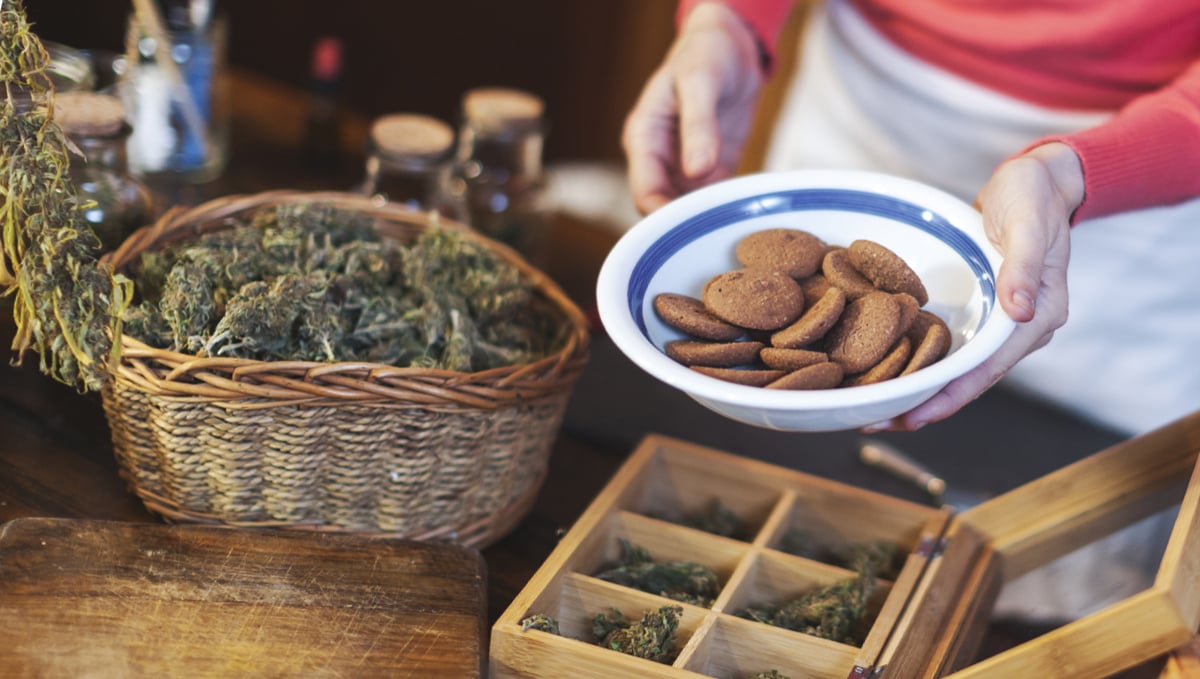
Delicious weed cookies ready to be consumed.
Making cannabutter or cannabis-infused oil is basically the same, we’re going to walk you through the process of creating your own canna-oil and cannabutter that can be used to make any variety of edible from a light drizzle of oil on a salad to the classic 'pot brownie.'
How To Make Cannabutter
When we say cannabutter, you can use any kind of butter, ghee, or even lard will work, but we'll recommend using butter because it's delicious.
Making your own cannabutter home is easy and you will need only two ingredients.
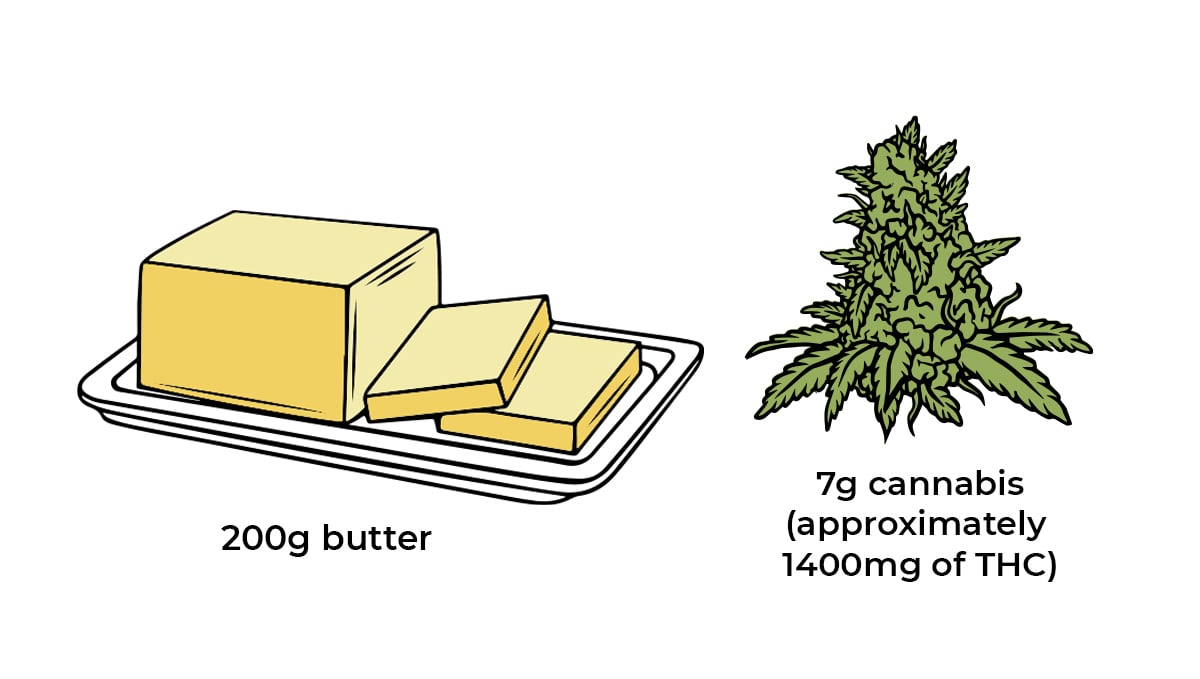
Ingredients used in making cannabutter.
Ingredients
- 200g butter
- 7g cannabis (approximately 1400mg of THC)
Step 1
Decarboxylate your cannabis.
Step 2
Mix 200ml of water with the butter in a heat-proof glass jar and place the jar in the middle of the pot, add water to the pot until the water level reaches half of the glass jar.
Step 3
Turn the heat to low and let the butter melt slowly, the water that you’ve mixed with the butter will prevent it from burning.
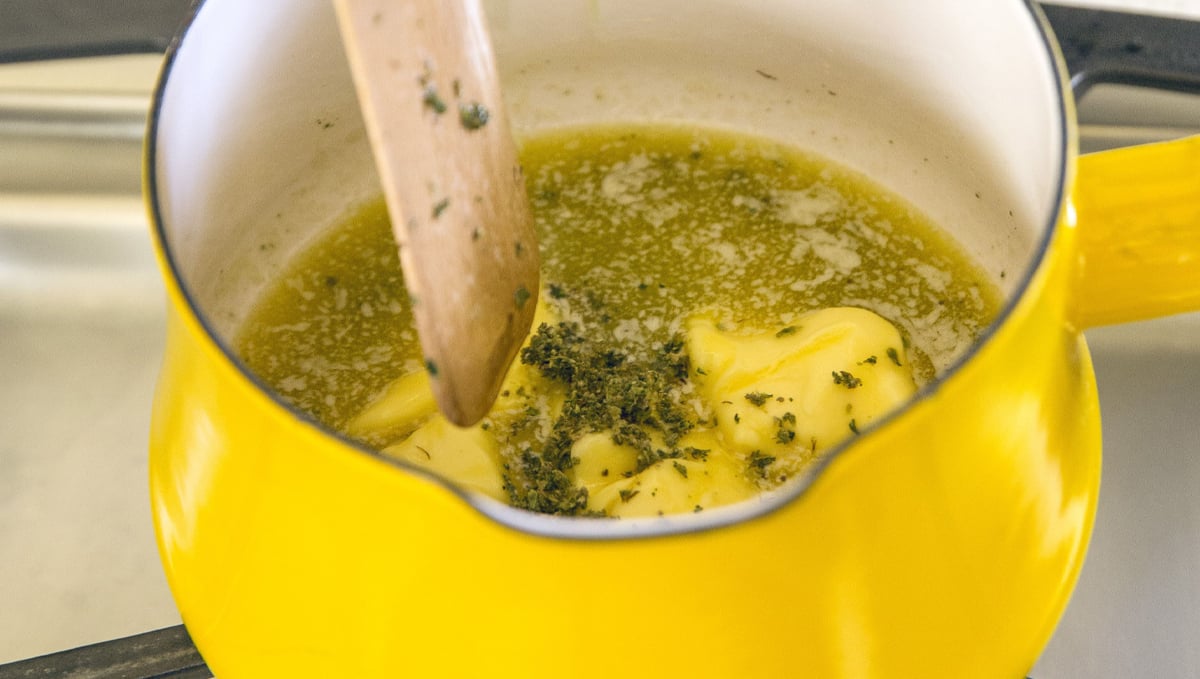
Remember that melting the butter at low heat prevents the butter from burning.
Step 4
Mix the cannabis with the butter as soon as the butter melts and when the temperature reaches around 85°C, let the mixture simmer for 2-3hs, stirring occasionally.
Step 5
After 2-3hs have passed and the butter has turned dark green, strain the mixture with a cheesecloth or tea strainer, place the mixture in a glass container and refrigerate it.
Step 6
When the butter solidifies again, use a knife or spoon to remove it from the glass container so you can drain the water out and it’s ready to be used!
How To Make Cookies With Weed
Making cannabis-infused cookies is very simple and you can have less work by buying a boxed cookie mix but if you want to make it from scratch, here’s how to do it.
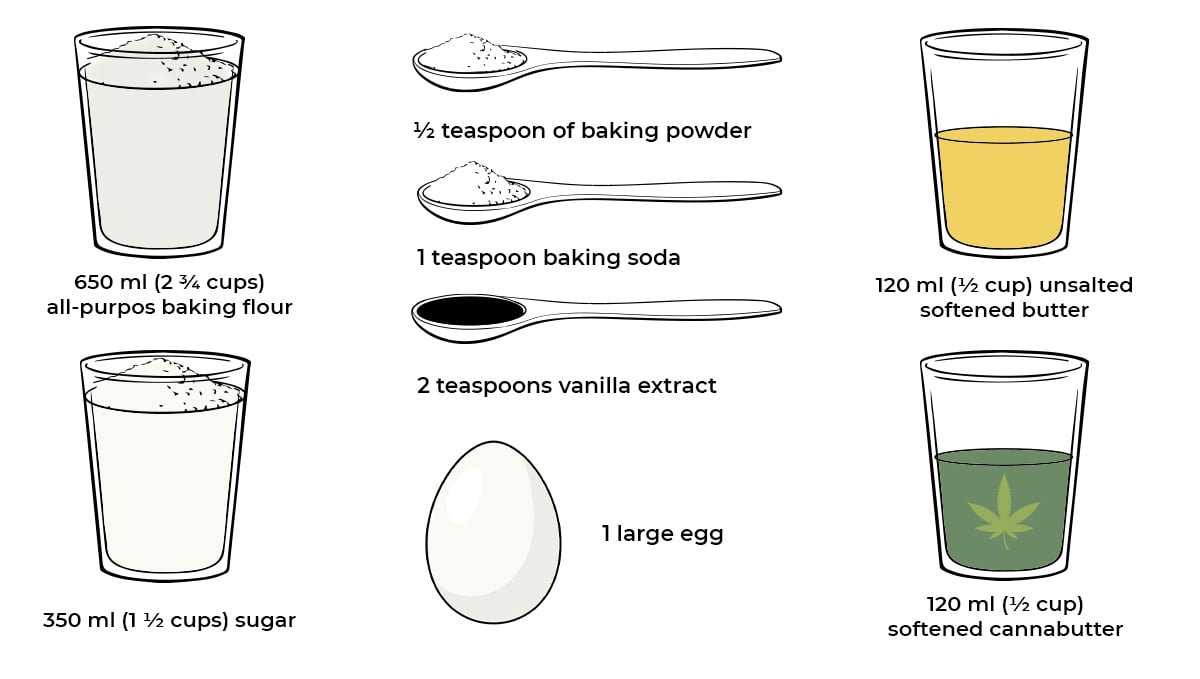
Ingredients needed to make cannabis-infused cookies.
Ingredients
- 650 ml (2 ¾ cups) all-purpose baking flour;
- ½ teaspoon of baking powder;
- 1 teaspoon baking soda;
- 350 ml (1 ½ cups) sugar;
- 120 ml (½ cup) unsalted softened butter;
- 120 ml (½ cup) softened cannabutter;
- 1 large egg;
- 2 teaspoons vanilla extract.
Mix the baking soda, flour, and baking powder in a small bowl and set aside.
Make sure both "butters" are at room temperature, mix them in a large bowl with the sugar until it forms a uniform creamy texture, if you are using an electric mixer it should take around 3 min.
Mix in the egg and vanilla extract with the butter and sugar, and mix gently.
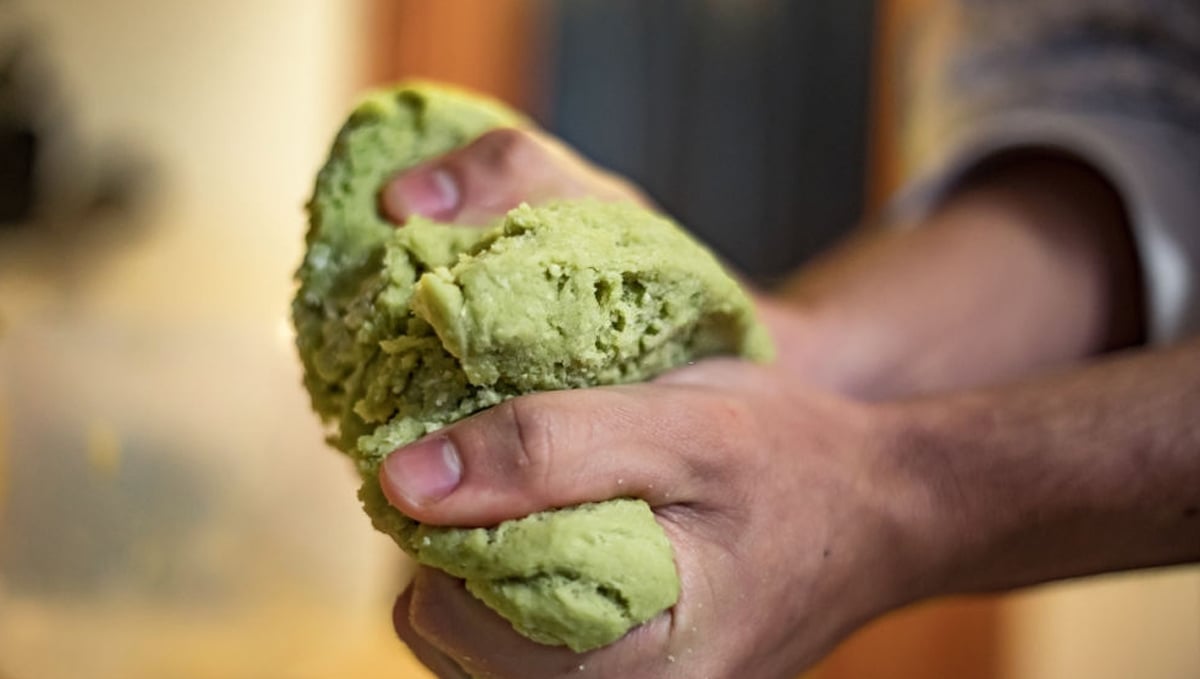
Potent cannabis-infused cookie dough.
Now you can make the dough balls, place them on a baking sheet and let them bake for 8-9 min until they’re brown and crispy, and that’s it!
7. Canna Oil Recipes
Last but not least you can make your own cannabis-infused oil that you eventually can add to your edibles recipes. Now, depending on the type of oil you're using, you can not only use it for making food but also for using it on your skin.
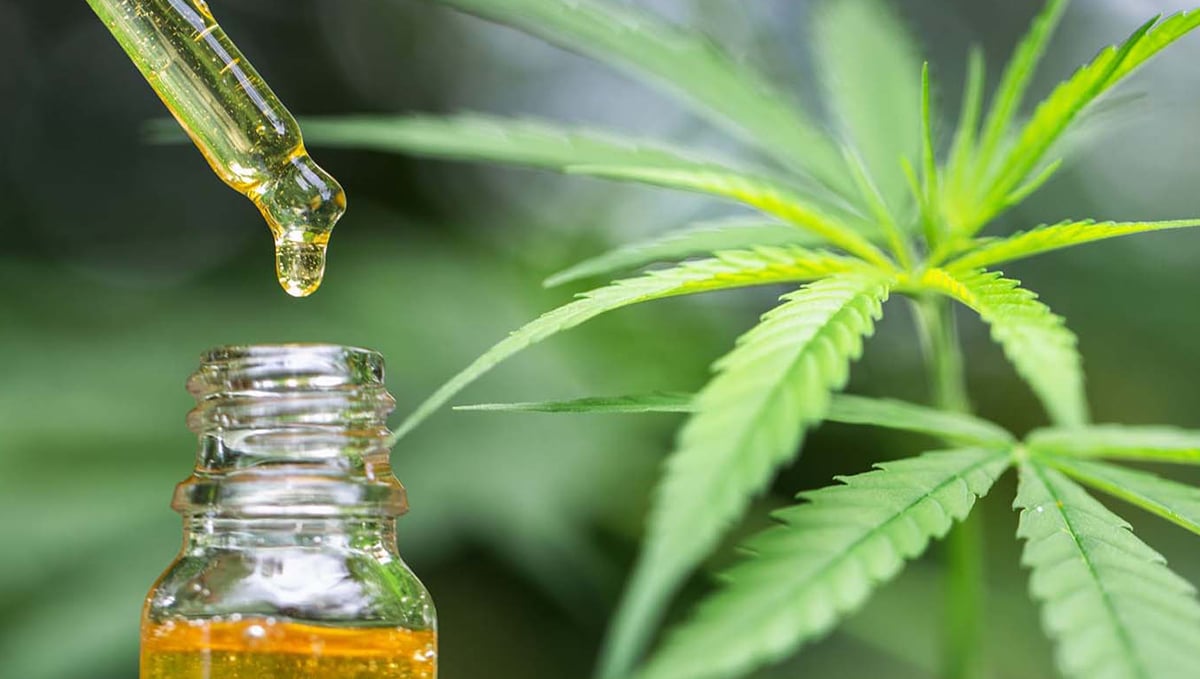
Canna-oil must be stored in a glass jar and can last up to a year!
You can infuse coconut oil, olive oil, sunflower oil, or any type of oil you prefer, and as long as you store it in a glass jar it can last up to a year!
How To Make Canna Oil
Now, as said above, cannabis oil can also be used as a topical lotion, your skin will end up absorbing the cannabinoids and you will have an effect like you would when eating.
We recommend using coconut oil or olive oil if you want to use the infused oil on your skin but if you're going to eat it, you can use whatever oil you wish to use.
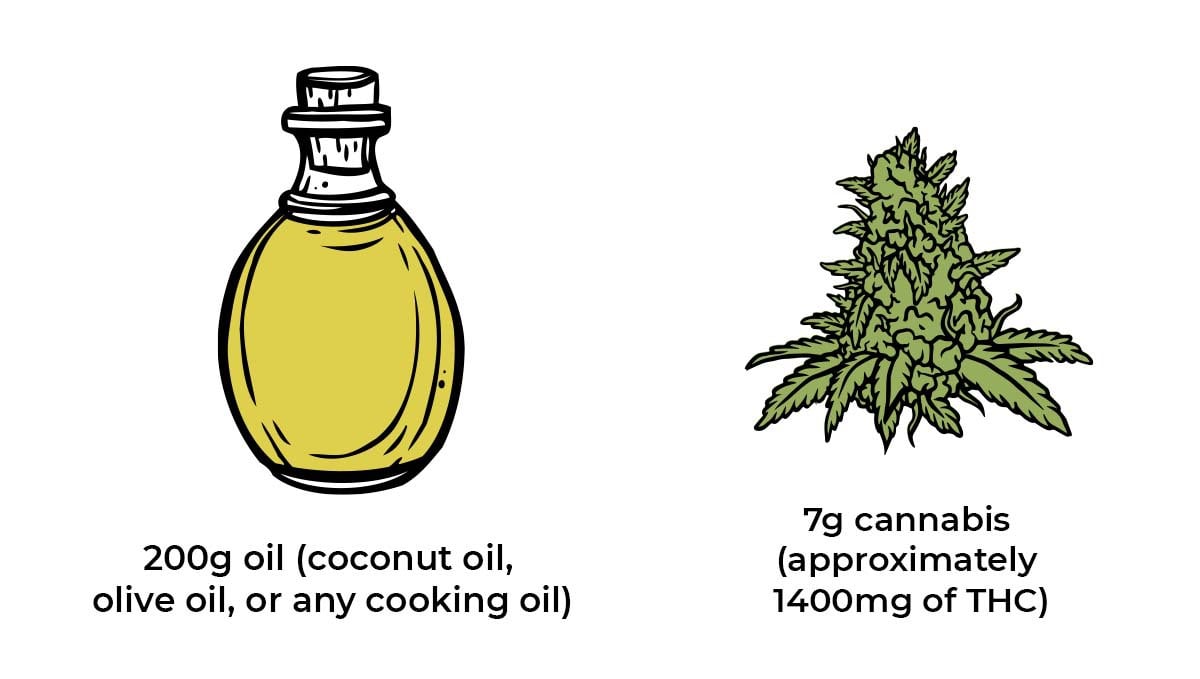
Basic ingredients needed to make cannabis-infused oil.
Ingredients
- 200g oil (coconut oil, olive oil, or any cooking oil);
- 7g cannabis (approximately 1400mg of THC).
Step 1
Decarboxylate your cannabis.
Step 2
Place the cannabis in a small saucepan with the oil.
Step 3
Simmer in low heat (approx. 85°C) for 10-20 min or when the oil starts turning green. Remember that the low heat is necessary so you don’t evaporate the cannabinoids.
Step 4
Remove from heat and let it cool down for around 30min and then strain it with a cheesecloth or a tea strainer to separate the oil from the cannabis and is now ready!
Step 5
Store the oil in a glass jar, if stored in the fridge, it can last for up to a year.
How To Make Pot Brownies
Now that you have your canna-oil stored and waiting to be used, you can step up your game and impress your friends with a hot plate of weed brownies. You can follow whatever recipe you want to but if you want to make super delicious and potent brownies, just follow our recipe.

Basic ingredients for weed brownies recipe.
Ingredients
- ½ cup canna-oil
- 1 cup of sugar
- 1 teaspoon vanilla
- 2 large eggs
- ¼ teaspoon baking powder
- ⅓ cup cocoa powder
- ¼ teaspoon salt
- ½ cup flour
Just like said above, if you want to keep it simple you can use a boxed brownie mix but today we’ll teach you how to make it from scratch.
Preheat your oven to 180°C, mix oil and sugar until well blended and then add the eggs and vanilla.
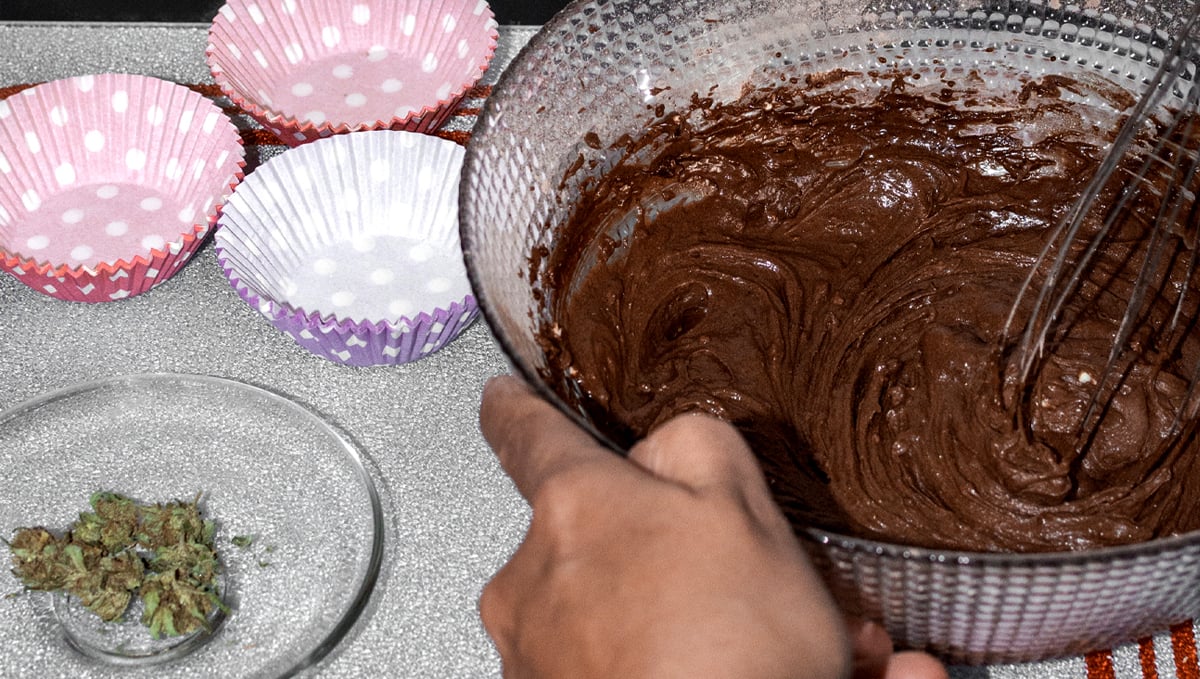
Make the best infused brownies from scratch!
Mix all the dry ingredients in a separate bowl, then mix them in the oil/sugar blend and pour it into a 22x22cm square pan, bake for 20min or until the sides start to pull away from the pan.
Let the brownies cool down and enjoy!
8. In Conclusion
Edibles are a great alternative to get high without having to deal with fire, smoke, and especially, smell. We recommend you try these recipes and if you have other good homemade recipes that you would like to share with fellow growers, please leave a comment in the comment section below!
External References:
- Edible cannabis. Canadian Medical Association Journal. -Zipursky, Jonathan & Bogler, Orly & Stall, Nathan. (2020).
- Legal cannabis laws, home cultivation, and use of edible cannabis products: A growing relationship?. The International journal on drug policy. - Borodovsky, Jacob & Budney, Alan. (2017).
This post was most recently updated on November 02, 2020.
